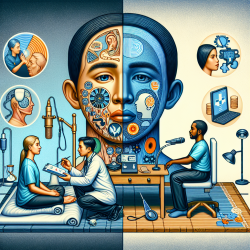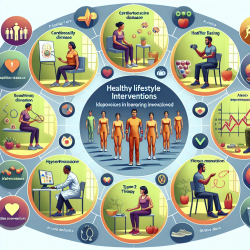In the current educational landscape, the challenges of ensuring adequate therapy staffing in schools have become increasingly pronounced. Burnout among therapists is a significant issue that has been exacerbated by the ongoing demand for specialized services, such as speech therapy. At TinyEYE, we are pioneering innovative solutions to address these challenges and provide sustainable support to schools through our online therapy services.
Therapist burnout is a multifaceted problem influenced by heavy caseloads, administrative burdens, and the emotional toll of working with students who have diverse needs. The repercussions of burnout are far-reaching, impacting not only the therapists but also the students who rely on consistent and effective support. To mitigate these issues, it is essential to explore and implement innovative approaches that can alleviate the pressures faced by school-based therapists.
Understanding the Burnout Epidemic
Burnout is characterized by emotional exhaustion, depersonalization, and a reduced sense of personal accomplishment. In the context of school therapy, this can lead to decreased job satisfaction, higher turnover rates, and ultimately, a decline in the quality of services provided to students. Addressing burnout requires a comprehensive understanding of its root causes and the implementation of targeted strategies to support therapists.
Innovative Approaches to Therapy Staffing
One of the most promising solutions to combat therapist burnout and staffing shortages is the integration of online therapy services. TinyEYE's online therapy platform offers a range of benefits that can significantly enhance the delivery of therapy in schools:
- Flexibility: Online therapy allows therapists to work from various locations, reducing the need for extensive travel and enabling a better work-life balance.
- Efficiency: Digital platforms streamline administrative tasks, allowing therapists to focus more on direct student interaction and less on paperwork.
- Accessibility: Schools in remote or underserved areas can access specialized therapy services that might otherwise be unavailable.
- Consistency: Online sessions can be scheduled more easily, ensuring that students receive regular and uninterrupted therapy.
Supporting Therapists Through Technology
At TinyEYE, we believe that technology can play a crucial role in supporting therapists and improving their overall job satisfaction. Our platform is designed with user-friendly features that simplify the therapy process and reduce the administrative burden on therapists. This includes:
- Automated Scheduling: A built-in scheduling system that helps manage appointments efficiently.
- Digital Resources: A comprehensive library of digital tools and resources that therapists can use during sessions.
- Data Tracking: Easy-to-use data tracking and reporting features that help monitor student progress and outcomes.
Collaboration and Continuous Improvement
Innovation is not a one-time effort but an ongoing process of collaboration and improvement. At TinyEYE, we are committed to working closely with schools, therapists, and government health regulators to continuously refine our online therapy services. By fostering open communication and feedback, we aim to develop solutions that are responsive to the evolving needs of the educational community.
Conclusion
Addressing therapist burnout and staffing shortages in schools requires innovative and sustainable solutions. TinyEYE's online therapy services offer a promising approach to alleviate these challenges, providing flexible, efficient, and accessible support to both therapists and students. By leveraging technology and fostering collaboration, we can create a more resilient and effective therapy system that benefits everyone involved.
We invite government health regulators and other stakeholders to join us in this mission. Together, we can ensure that every student has access to the high-quality therapy services they need, while also supporting the well-being and professional satisfaction of our dedicated therapists.










